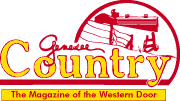The
convocation's expenses were Morris' responsibility, and he ordered 1,500 rations
of beef, 1,500 rations of flour and extensive gifts in proportion. He could not
come to the meeting himself, claiming poor health, but in reality he had overextended
his credit in land speculations and was besieged by creditors in his Philadelphia
mansion.
Shortly after the treaty was signed, Morris spent a protracted
period of time in debtors' prison, to the dismay of President Washington and the
Congress, which considered him a hero for his leadership role in financing the
Revolution.
By Aug. 20, the Senecas had arrived in great numbers at the
slopes below the present Village of Geneseo in what is now Livingston County,
where a temporary structure for the meeting had been prepared.
The whites
were more dilatory. Young Thomas Morris, acting as his father's agent, did not
arrive until two days later, followed by Col. Jeremiah Wadsworth, the federal
commissioner appointed by President Washington; Israel Chapin, superintendent
of Indian Affairs; various representatives of Massachusetts and New York; interpreters
and onlookers. Most of the whites seemed to have stayed during the negotiations
in the cabin of William and James Wadsworth near the temporary meeting structure.
Finally, the negotiations opened Aug. 28, although by then young Morris
had distributed food, warned about “troublemakers,” and apologized for
the officials' delay in showing up “due to bad weather on the roads.”
At the official opening Red Jacket, already a major spokesman for his people
at age 39, chided the whites for their delayed appearance, while acknowledging
receipt of their invitations to the meeting.
The state and federal commissioners
then spoke and promised fair proceedings. Young Morris read an extended speech
from his father, pledging “nothing but fair, open and honest transactions”
for the purchase of the Senecas' lands.
There was no response from the
Indians, in keeping with their custom of conferring among themselves to achieve
unanimity before committing themselves to anything.
Nearly all of Aug.
29 was consumed in this way, but late in the afternoon Red Jacket, reopening the
proceedings, noted satisfaction with what Thomas Morris had transmitted from his
father. Red Jacket also noted that in the previous day's speeches something had
been held back: the price the Senecas were being offered for their lands.
Morris
said he was ready to proceed, but because of the lateness of the hour all agreed
further deliberations would be carried over to the next day.
On Aug. 30,
Morris spoke artfully again, saying the Indians would have more money than ever
before; that they could reserve lands to protect each of their villages, and that
they could keep all hunting and fishing rights. He did not specify how much his
father was offering.
After a pregnant pause, the Indians observed that
if he had no more to say, they would consult. This they did, the whole next day,
without response.
On the morning of Sept. 1, Farmer's Brother, a cool-headed
and much respected chief, came to Morris and said someone had been selling whiskey
to the Indians and there was much disorder. The lives of the whites were in danger.
Morris advised him to find the barrel of whiskey and smash it, which he
did. Red Jacket and others who had participated in the libation fought bitterly
over this waste, and a meeting that day was out of the question.

